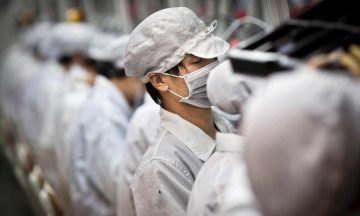 Isabella Weber in The Guardian:
Isabella Weber in The Guardian:
Talk of a new cold war is everywhere. Yet the economic context of the confrontation between the US and China is fundamentally different from the days of the iron curtain. The US and the Soviet Union had created competing globalisations, dividing the world into separate economic blocs. The two sides of the present divide are tied together as one “Chimerica” – with China as the global “workshop” and the US as the tech “headquarters” of the world. The old hope that this economic interdependence would prevent political conflict has been shattered. Instead, deep economic integration has increased the stakes: the core of the world economy could fall apart.
Today’s global economic order is still inscribed on the back of every iPhone: designed in California, assembled in China. Both parties in the race for the US presidency pledge to put an end to this arrangement. The promise, this time on both sides, is to bring manufacturing home. President Trump’s campaign proclaims that it will “end our reliance on China”. Joe Biden for his part is trying to out-hawk Trump and promises a future of “Made in America”.
Meanwhile, Xi Jinping proclaims “dual circulation” as China’s new economic strategy, which promises more focus on the domestic sphere rather than reliance on the rest of the world. It is true that one part of this dual approach is to signal that China’s door remains open. Xi has personally written to the CEOs of foreign firms assuring them of a favourable business environment. The Chinese government has announced plans to transform Hainan island into a gigantic free trade port and China has opened its financial and insurance markets at a pace that international fund managers had not dared to hope for. On the other hand, China is preparing for a falling-out with the US, emphasising the goal of self-reliance in critical sectors such as food and technology.
More here.
